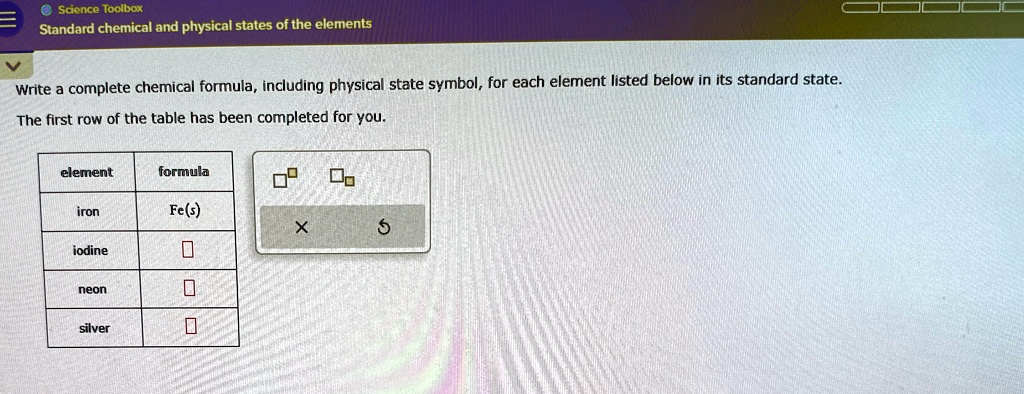Science Toolbox Standard chemical and physical states of the elements Write a complete chemical formula, including physical state symbol, for each element listed below in its standard state. The first row of the table has been completed for you. element formula iron Fe(

The Correct Answer and Explanation is:
Here’s the completed table for the elements in their standard states:
| Element | Formula |
|---|---|
| Iron | Fe(s) |
| Iodine | I₂(s) |
| Neon | Ne(g) |
| Silver | Ag(s) |
Explanation
In chemistry, the standard state of an element refers to its most stable form at 1 atmosphere pressure and a specified temperature, commonly 25°C. Representing the standard state involves two things: the correct elemental formula and the appropriate physical state symbol in parentheses.
Iron (Fe) is a metallic element. Like most metals, it exists as individual atoms packed in a solid metallic lattice under standard conditions. Therefore, it is written as Fe(s), where the “s” indicates a solid.
Iodine (I₂) is unique among the halogens because its standard state is a diatomic solid. At room temperature, it exists as I₂ molecules forming a dark, lustrous crystalline solid. This distinguishes it from chlorine and fluorine, which are gases at standard conditions. So, its correct representation is I₂(s).
Neon (Ne) is a noble gas. These elements are monoatomic and gaseous at room temperature due to their full outer electron shells, which make them chemically inert. Since neon exists as individual Ne atoms in the gas phase, its correct formula is Ne(g).
Silver (Ag) is another metal like iron. It exists as a dense, lustrous solid composed of Ag atoms in a metallic structure. Therefore, its standard formula is Ag(s).
Recognizing these forms is crucial in chemical thermodynamics and equations, especially when calculating enthalpy, entropy, or free energy changes. Standard states serve as reference points, and incorrectly identifying them can lead to significant errors in stoichiometric or thermochemical calculations.
